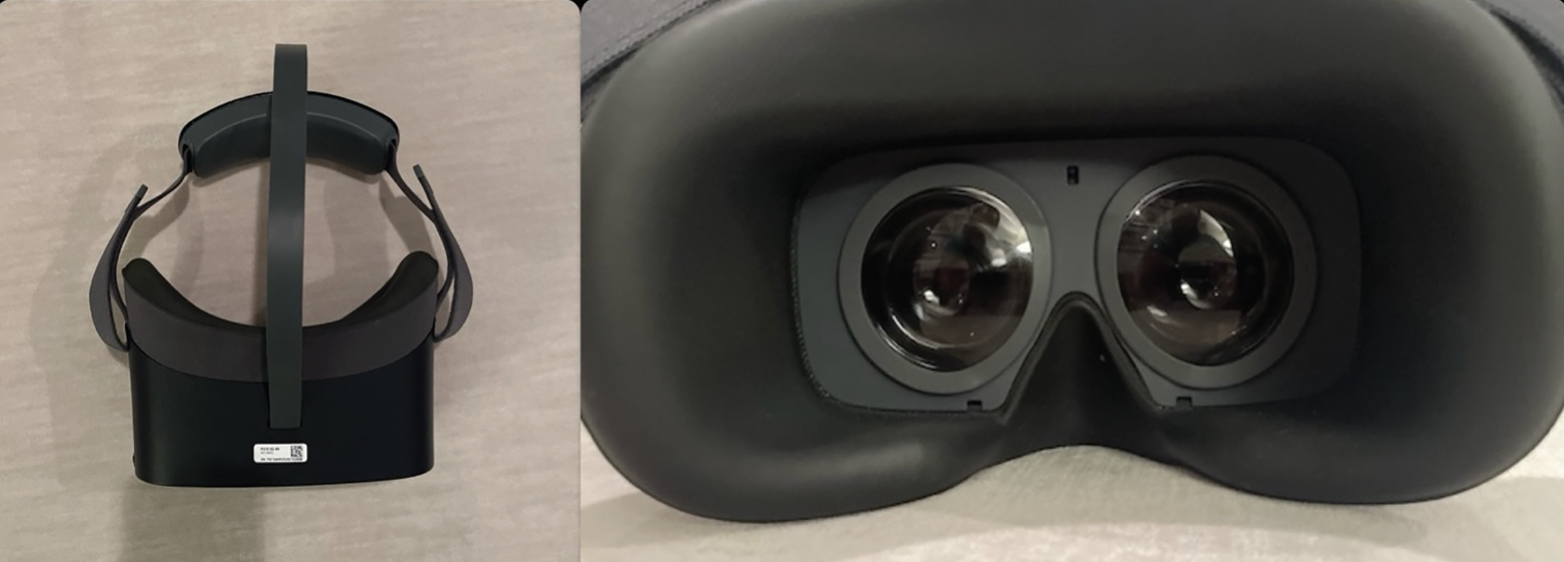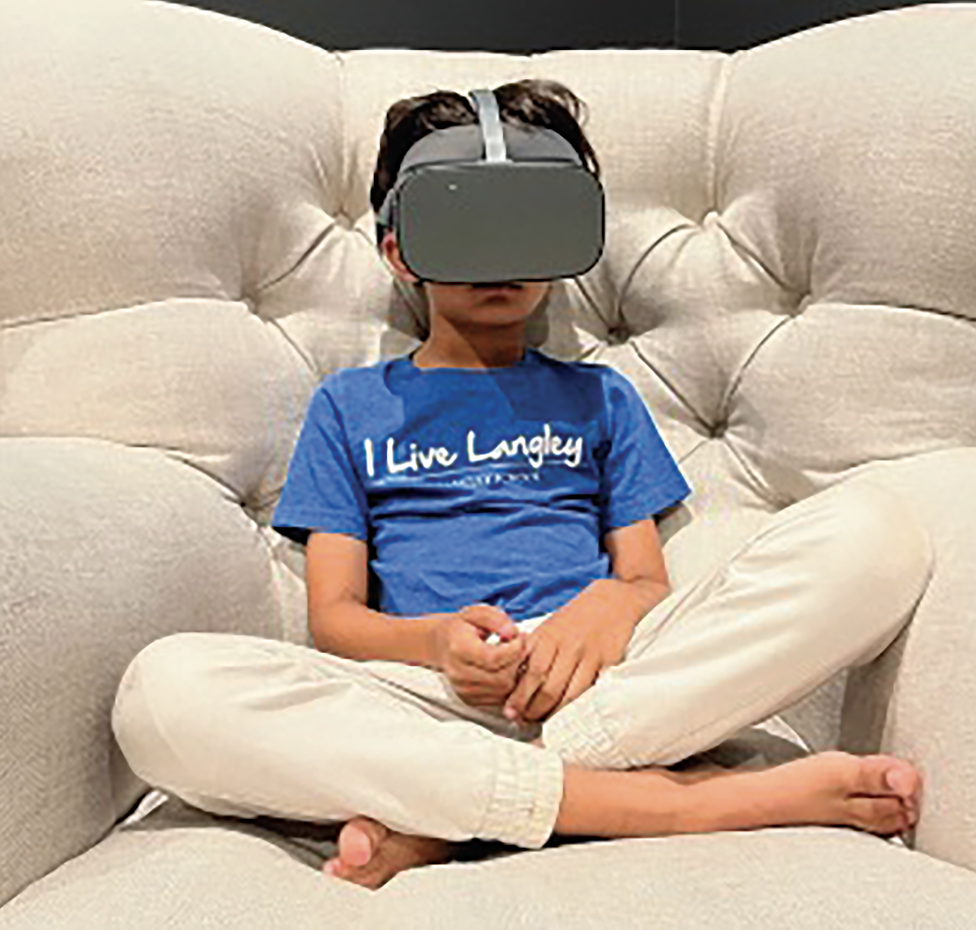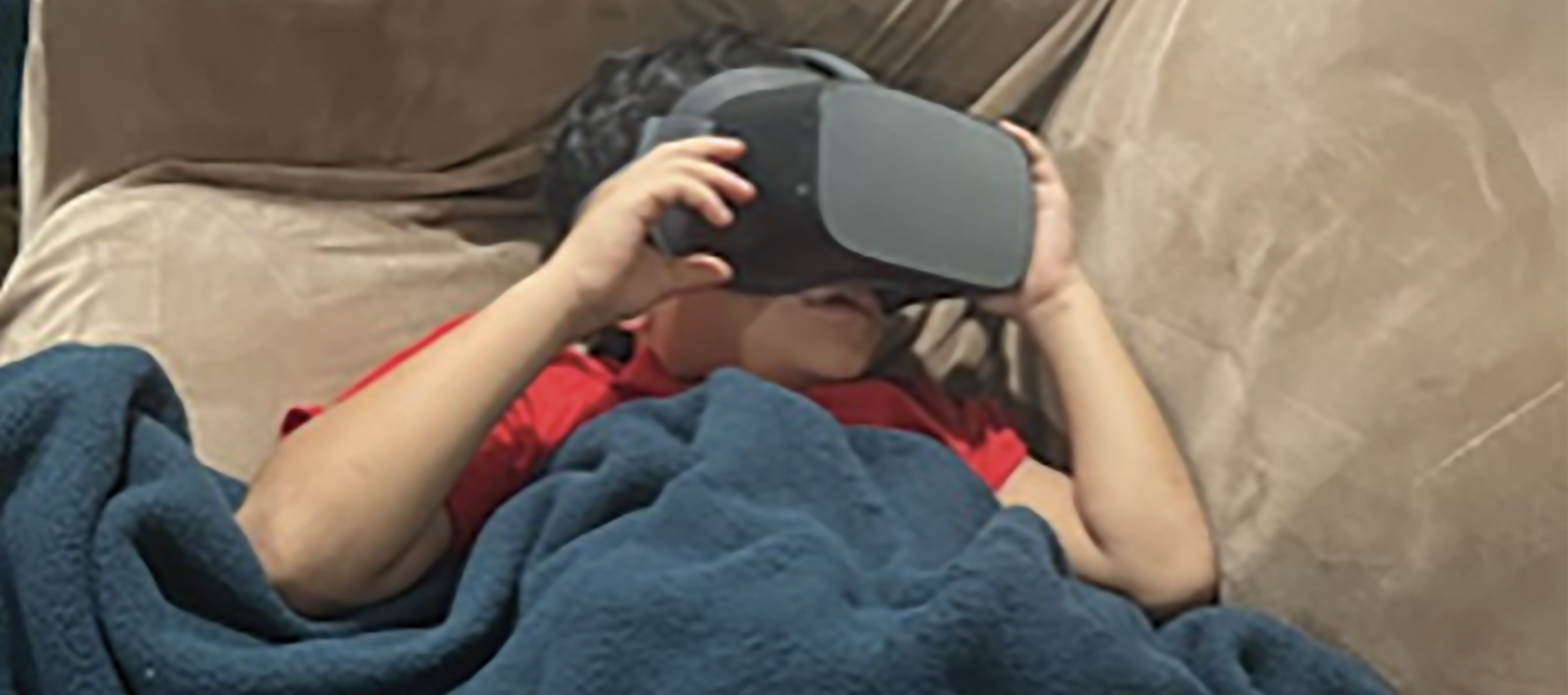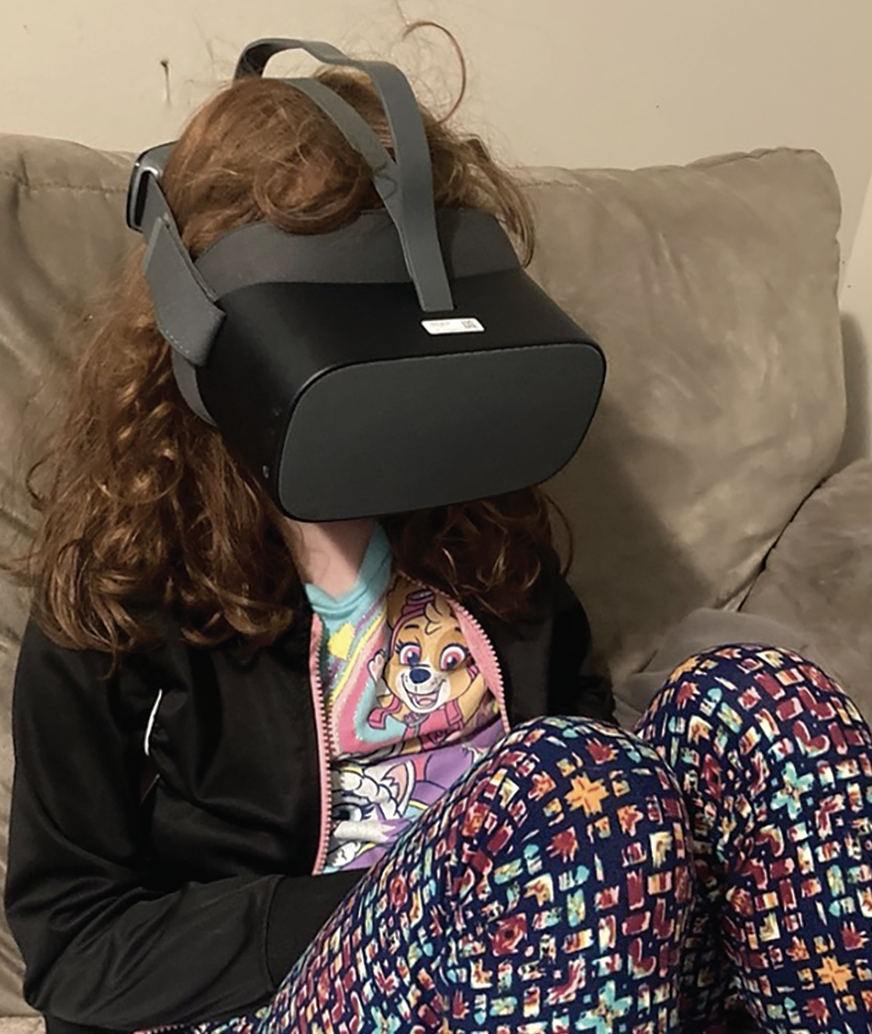Amblyopia is a disorder of visual development, and early diagnosis of visual dysfunction associated with amblyopia is crucial. Treatment needs to begin at a stage where the neurological pathways are still amenable to stimulation, recovery and reversal of cortical damage. All children should have routine visual screenings, as the potential for successful treatment of amblyopia is best in young children. If not promptly recognized or treated, functional deficits from amblyopia may result and persist into adulthood, with impact on productivity and quality of life.
Here, we’ll discuss how new digital therapeutics for amblyopia are shaping up, as well as our experiences with one of them.
Amblyopia’s Effects
The resulting morbidities from amblyopia include:
• Ocular comorbidities (most often strabismus). Strabismus can be more obvious to peers and associated with negative peer interactions. Children begin to develop a negative attitude toward classmates with strabismus as early as age 6. This attitude adversely affects interpersonal relationships, self-image, schoolwork, participation in sports, and only intensifies in the teen and adult years.1
• Increased risk of impairment of the good eye. The lifetime risk of impairment to the sound eye is estimated to be 1:100 to 1:1,000 from accidental trauma, or other etiologies such as macular degeneration and retinal vein occlusion.2,3
• Impaired binocular function. Amblyopia doesn’t just affect the vision, it’s a binocular disorder with accompanying dysfunction of accommodation, fixation, vergence, reading speed and fluency and contrast sensitivity. There can be reduced, or absent, stereopsis which can affect visual-motor skills and even restrict certain careers such as aviation.
 |
| Figure 1. The head-mounted Luminopia system treats amblyopia by reducing contrast in the sound eye to 15 percent and by using complementary masking so that binocularity is necessary to view the full video. |
Standards of Care
Current standards of care in the treatment of amblyopia are based on the work of two study groups that conducted randomized clinical trials to define optimal treatment protocols: The UK-based Monitored Occlusion Treatment of Amblyopia Study (MOTAS) and the U.S.-based Pediatric Eye Disease Investigator Group (PEDIG). The strengths of these studies include a large cohort, broad age groups, different types of amblyopia in a wide range of acuities, certified examiners and standardized acuity testing protocols.
Mainstays in the treatment of amblyopia include refractive correction (glasses), occlusion therapy (or patching of the non-amblyopic eye) and pharmacological penalization (use of atropine dilating drops in the non-amblyopic eye). Although glasses and patching are the gold standard of amblyopia treatment, there are drawbacks. Many parents complain about skin irritation from adhesive patches, some of which are severe enough to require intensive skin emollients or alternative therapy. As a result of discomfort, there may be poor adherence to treatment.
Children also can be resistant to patching, for many reasons—one of which is that it occludes their better-seeing eye. Atropine offers the ability to bypass patient compliance, with a single nighttime drop affecting 24 hours of better-seeing-eye blur. However, it’s less effective if this eye is myopic. The long-lasting dilating effects are particularly difficult for blue irides and can compromise outdoor comfort.
As a clinician, it’s perhaps most upsetting to see children with excellent patching compliance fail to improve in their vision. This has been supported by the literature. When occlusion dose monitors are used, it’s been shown that even children with excellent patch compliance sometimes fail to improve. For this reason, alternative treatments, e.g., dichoptic therapy, are particularly interesting to physicians and to parents.
What is Dichoptic Therapy?
 |
| Figure 2. A boy with myelinated nerve fibers and anisometropic amblyopia. He experienced one line of improvement after failing patching and atropine 1%. |
This method of treatment involves presenting a different visual stimulus to each eye independently and altering it in a way to encourage use of an amblyopic eye with simultaneous binocular function. This is often done by reducing contrast of the sound eye to a point that overcomes suppression of the amblyopic eye.
Eileen Birch, PhD, and her colleagues in Texas studied the effects of binocular versus sham games in children ages 3 to less than 7 years and found improvement in the binocular treatment group’s vision, but with no significant effect on stereoacuity. Some members of each study group also patched, but in the patients who were compliant (i.e., completed at least half of the intended binocular treatment time), a similar improvement was demonstrated regardless of whether or not the patient patched or not.4,5
Due to these impressive preliminary results, the PEDIG network studied binocular iPad-based dichoptic treatment. Courtney L. Kraus, MD, one of the authors of this article, participated in both PEDIG subsequent studies and “was not surprised by the study results.” Namely, when comparing a “falling blocks” game to patching and glasses, both the younger (ages 5 to 12) and older (ages 13 to 16) cohorts of children had greater improvement with part-time patching than with iPad therapy.6,7 The game itself was what prevented many children from seeing the benefit of dichoptic treatment. Children didn’t find the falling blocks game (similar to Tetris) engaging, and compliance with iPad therapy was a major issue. Less than 20 percent of kids finished the prescribed treatment.8
Dig Rush
Dr. Kraus remembers how discouraging the initial results were, and how the investigators tried to address the issue of compliance with a more engaging game, Dig Rush. They also changed the study question to whether dichoptic iPad play could be better than glasses treatment alone. While the younger cohort of kids showed an initial four-week outpacing of the glasses alone group, everything evened out by eight weeks, and it was concluded that there was no difference between study groups in VA or stereoacuity.8,9 Compliance was better here than in the falling blocks studies, but still barely half of children completed 75 percent of the prescribed time.8 Therefore, for our practices, we feel that the dichoptic stimulus games in their current iterations lack strong support for effectiveness or patient engagement.
In recent years, two digital therapeutics presenting streaming content in a dichoptic fashion have received FDA approval for their use in the treatment of amblyopia. Of the two, both authors have experience prescribing Luminopia.
Luminopia
This device is a virtual reality headset used to present dichoptic images projected at optical infinity. The device is paired with a smartphone to stream content licensed from shows on PBS, Nickelodeon, Sesame Street and DreamWorks, among others. The system treats amblyopia in a twofold fashion by 1) reducing contrast in the better eye to 15 percent, and 2) complementary masking in each eye such that binocularity is necessary to see the full video. Specifically, the center of the amblyopic eye is kept clear. David Hunter, MD, PhD, and his team at Boston Children’s Hospital studied the device.10,11 Children aged 4 to 7 had a 1.5-line VA improvement with Luminopia after 12 weeks versus 1.2 lines after patching in an age-matched cohort, with significant gains in stereopsis in the VR treatment group. Even older children (8 to 12) and kids with one year of prior treatment had improvement with Luminopia. It must be noted that there was significantly better compliance with Luminopia compared to patching and similar dichoptic treatments. The contrast in Luminopia was also kept at 15 percent while other dichoptic studies gradually increased contrast over time.12,13
 |
| Figure 3. An 8-year-old boy who gained one line of vision at six months, after previously failing more than a year of patching. |
Authors’ Experiences
The “prescription” for Luminopia should be sent to PhilRx, upon which patients will receive a text message with further instructions. This can be done through the electronic medical record. Edward Kuwera, MD, an author of the current article, typically prescribes six refills for six months of treatment before re-evaluating the need to continue. Luminopia is calibrated to optical infinity, meant to be worn over glasses, and isn’t suitable for children with a pupillary distance less than 52 mm. Dr. Kraus has encountered at least one child who met age, as well as amblyopia, criteria for Luminopia, but unfortunately had too small a face to try the treatment. She is currently pushing patching for three more months for that little girl, but if she fails to improve, Dr. Kraus may still try Luminopia despite falling short of pupillary distance requirements.
With standard use of the device in children with anisometropic amblyopia, Dr. Kuwera has had success with a 6-year-old and an 8-year-old male. Both had been patching for almost one year prior to dichoptic treatment. Both children used Luminopia for at least six months prior to follow up. The 6-year-old improved by three lines, and the 8-year-old by one line. Despite great evidence for its use, even in children who’ve had prior treatment, he still advises parents that patching is the gold standard of amblyopia therapy and that these devices are a backup.
Dr. Kuwera reports two “off-label” usages of the device. He’s tried them in a 60-year-old patient with patching-naive mild amblyopia (acuity 20/40), and an aphakic 5-year-old with 20 PD of esotropia and 20/150 acuity despite years of patching, spectacle-wear and strabismus surgery. The device was successful in improving acuity by one line after six months in the adult patient, but not in the child. Dr. Kraus hypothesizes this child may have too large a strabismus to allow binocular play and is possibly just using the reduced contrast, non-amblyopic eye during viewing.
 |
| Figure 4. A 6-year-old girl with bilateral pseudophakia after IOL implants one year ago due to congenital cataracts. |
Dr. Kraus reports that she’s almost exclusively used Luminopia “off-label” for children with challenging-to-treat amblyopia. Dr. Kraus has a clinical practice that skews heavily towards anterior segment pathology—these patients often have strabismic, anisometropic and deprivational components to their amblyopia. She’s seen modest gains in children with extensive patching history, due to childhood cataracts. Personally, she’s found the high hyperopic aphakic prescriptions aren’t well suited to the VR headset, and mostly used the VR technology after implanting secondary intraocular lenses. She’s most excited by a child who had unilateral congenital glaucoma and subsequent high myopia. Her parents were never able to successfully patch. The child is 4 years old and refused to allow her sound eye to be patched for acuity testing. They just started Luminopia, and for the first time, the child allowed VA testing in the office. She was 20/400—but maybe that was some improvement!
CureSight
NovaSight received FDA approval for their device, CureSight, about one year after Luminopia. The authors have yet to prescribe this to patients, but there are perhaps some advantages over other digital therapeutics. CureSight is novel in its incorporation of an eye-tracking software that allows the device to selectively blur and reduce contrast to only the fovea of the sound eye. This means that as the child glances around the digital device, the eye-tracking changes the area of blur. The magnitude and diameter of the blurred area are fit according to the VA of both the amblyopic and the dominant eye. The lower the VA and larger the VA difference between the eyes, the greater the blur amplitude and diameter. The sharpness of the peripheral area isn’t affected by blur to encourage binocularity. Like the iPad-based dichoptic play, CureSight makes use of red-blue glasses to create the dichoptic environment.
The strongest evidence supporting the use of CureSight comes from a randomized, noninferiority trial of 103 children between 4 and 9 years of age done in Israel. In the 16-week study, children were randomized in a 1:1 fashion to 90 mins/day CureSight six days a week versus two hours/day patching seven days a week. Dr. Kraus’ impression of CureSight is that it offers more appeal to older children. The digital platform allows for streaming of any site the child may wish to access, with parental controls able to be placed. Netflix, Prime Video, Disney Plus, YouTube, Hulu—these are all accessible on CureSight. For the older children who have reported growing tired of the digital media library of Luminopia, or feeling the content skews towards a younger audience, this solves that issue. Compliance in the study demonstrated the popularity, with 91 percent of children completing their prescribed treatment.14
Final Thoughts
We’re at an exciting crossroads in the treatment of amblyopia. Digital therapeutics offer the potential to attract children to amblyopia therapy without some of the stigma and discomfort that comes with patching or atropine penalization. However, the American Academy of Pediatrics continues to recommend that children ages 2 to 5 watch no more than an hour of digital media per day. Balancing therapeutics with digital media, especially for those children who may require more hours of treatment, is an important consideration.
Key Takeaways
Here are several points to keep in mind:
• Correcting refractive error remains the first line in improving visual acuity and amblyopia.
• Patching is usually the next step in treating amblyopia. We prefer this treatment, though studies have shown equivalent efficacy with atropine.
• Because of the prolonged dilation, and lessened effect with myopic eyes, atropine is a treatment to use when parents are unable to complete patching. It can be used either in isolation, or in combination with whatever amount of patching is able to be completed.
• Dichoptic treatments have only been available with FDA approval for the last two years. Therefore, we’re only just beginning to use them in practice. Enthusiasm has been high from patients, and we expect compliance rates to be similar. This mirrors study findings.
• Luminopia received FDA approval first, therefore there’s more experience with its use. It’s best for the recommended ages 4 to 9, with older children finding the content less appealing.
• CureSight studies show significant promise, even improving visual acuity over patching. The authors will likely begin using this more in the year to come.
Dr. Collinge is an assistant professor in the Department of Pediatrics of the University of Connecticut School of Medicine. She has no financial interest in any of the products discussed in the article.
Dr. Kuwera is an assistant professor of ophthalmology and Dr. Kraus is an associate professor of ophthalmology at The Zanvyl Krieger Children’s Eye Center, The Wilmer Eye Institute, The Johns Hopkins University School of Medicine in Baltimore. They have no related financial disclosures.
References
1. Carlton J, Kaltenthaler E. Amblyopia and quality of life: A systematic review. Eye (Lond) 2011;25:4:403-13.
2. Rahi J, Logan S, Timms C, Russell-Eggitt I, Taylor D. Risk, causes, and outcomes of visual impairment after loss of vision in the non-amblyopic eye: A population-based study. Lancet 2002;360:9333:597-602.
3. Tommila V, Tarkkanen A. Incidence of loss of vision in the healthy eye in amblyopia. Br J Ophthalmol 1981;65:8:575-7.
4. Birch EE, Li SL, Jost RM, et al. Binocular iPad treatment for amblyopia in preschool children.
JAAPOS 2015;19:1:6-11.
5. Kelly KR, Jost RM, Dao L, Beauchamp CL, Leffler JN, Birch EE. Binocular iPad game vs patching for treatment of amblyopia in children: A randomized clinical trial. JAMA Ophthalmol 2016;134:12:1402-1408.
6. Holmes JM, Manh VM, Lazar EL, et al. Effect of a binocular iPad game vs part-time patching in children aged 5 to 12 years with amblyopia: A randomized clinical trial. JAMA Ophthalmol 2016;134:1391-400.
7. Manh VM, Holmes JM, Lazar EL, et al. A randomized trial of a binocular iPad game versus part-time patching in children aged 13 to 16 years with amblyopia. Am J Ophthalmol 2018;186:104-115.
8. Pediatric Eye Disease Investigator Group; Holmes JM, Manny RE, Lazar EL, Birch EE, Kelly KR, Summers AI, Martinson SR, Raghuram A, Colburn JD, Law C, Marsh JD, Bitner DP, Kraker RT, Wallace DK. A randomized trial of binocular Dig Rush game treatment for amblyopia in children aged 7 to 12 years. Ophthalmology 2019;126:3:456-466.
9. Manny RE, Holmes JM, Kraker RT, Li Z, Waters AL, Kelly KR, Kong L, Crouch ER, Lorenzana IJ, Alkharashi MS, Galvin JA, Rice ML, Melia BM, Cotter SA; Pediatric Eye Disease Investigator Group. A randomized trial of binocular Dig Rush game treatment for amblyopia in children aged 4 to 6 years. Optom Vis Sci 2022;99:3:213-227.
10. Xiao S, Angjeli E, Wu HC, Gaier ED, Gomez S, Travers DA, Binenbaum G, Langer R, Hunter DG, Repka MX; Luminopia Pivotal Trial Group. Randomized controlled trial of a dichoptic digital therapeutic for amblyopia. Ophthalmology 2022 Jan;129:1:77-85. Erratum in: Ophthalmology 2022;129:5:593.
11. Xiao S, Gaier ED, Wu HC, Angjeli E, Nuth PL, Bohra LI, Miller AM, Mazow ML, Stout AU, Morse CL, Blumenfeld LC, Glaser SR, Crouch E, Ekdawi NS, Lyon DW, Silbert DI, Hunter DG. Digital therapeutic improves visual acuity and encourages high adherence in amblyopic children in open-label pilot study. J AAPOS 2021 Apr;25:2:87.e1-87.e6.
12. Li SL, Reynaud A, Hess RF, et al. Dichoptic movie viewing treats childhood amblyopia. J AAPOS 2015;19:401-5.
13. Birch EE, Jost RM, De La Cruz A, et al. Binocular amblyopia treatment with contrast-rebalanced movies. J AAPOS 2019;23:160.e1-5.
14. Wygnanski-Jaffe T, Kushner BJ, Moshkovitz A, Belkin M, Yehezkel O; CureSight Pivotal Trial Group. An eye-tracking-based dichoptic home treatment for amblyopia: A multicenter randomized clinical trial. Ophthalmology 2023;130:3:274-285.



